Marigold ointment as a home remedy – what the cream is used for & do-it-yourself recipes
If you value natural cosmetics and medicinal products, you should not do without marigold ointment and equip your medicine cabinet with it. Their good skin tolerance in combination with numerous good properties makes them a popular remedy for various skin problems, but also for complaints with the musculoskeletal system. We explain to you what the marigold cream is used for, what effect it has and how you can make marigold ointment yourself.
Marigold ointment effect

In the marigold (Calendula officinalis) contain important ingredients that can have a wonderful effect on health. It is precisely these ingredients that make the medicinal plant so valuable. The so-called flavonoids, triterpene saponins and the essential oil are meant. They not only have an anti-inflammatory effect, but also promote wound healing.

In addition, there are antiviral, antibacterial and antimicrobial properties, combined with fungicidal effects, which has already been proven by numerous studies. And as if that weren't enough, the medicinal plant also has a positive impact on our immune system. No wonder that marigold ointment is used for many ailments. But
Marigold ointment – what is it used for?
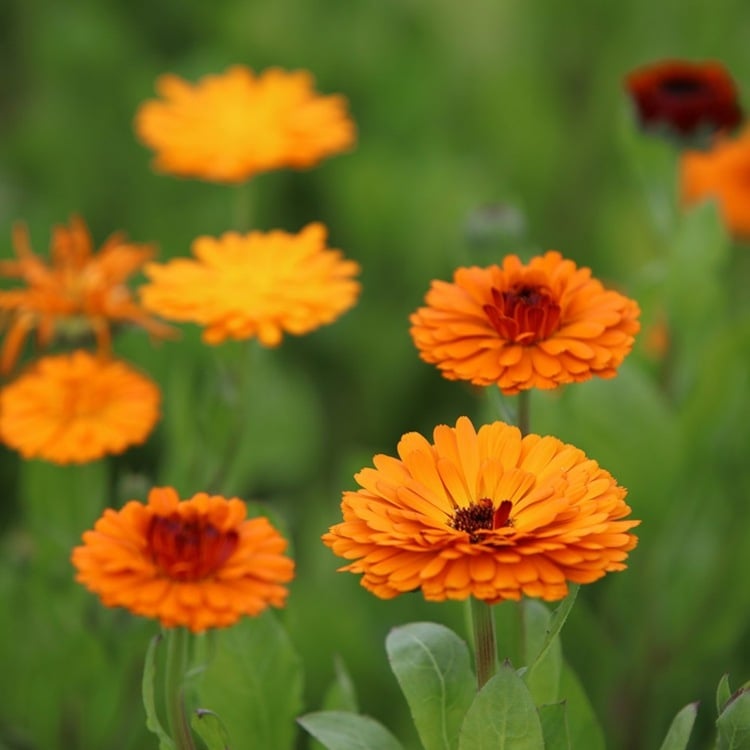
Now ask yourself the question in which areas marigold ointment is used. First and foremost, there are problems with the skin, including pimples, neurodermatitis, wounds and others. With their help, inflammation is alleviated. That is why the marigold in the form of a mouthwash is also very well suited for the treatment of inflammation of the mucous membranes in the throat and mouth.
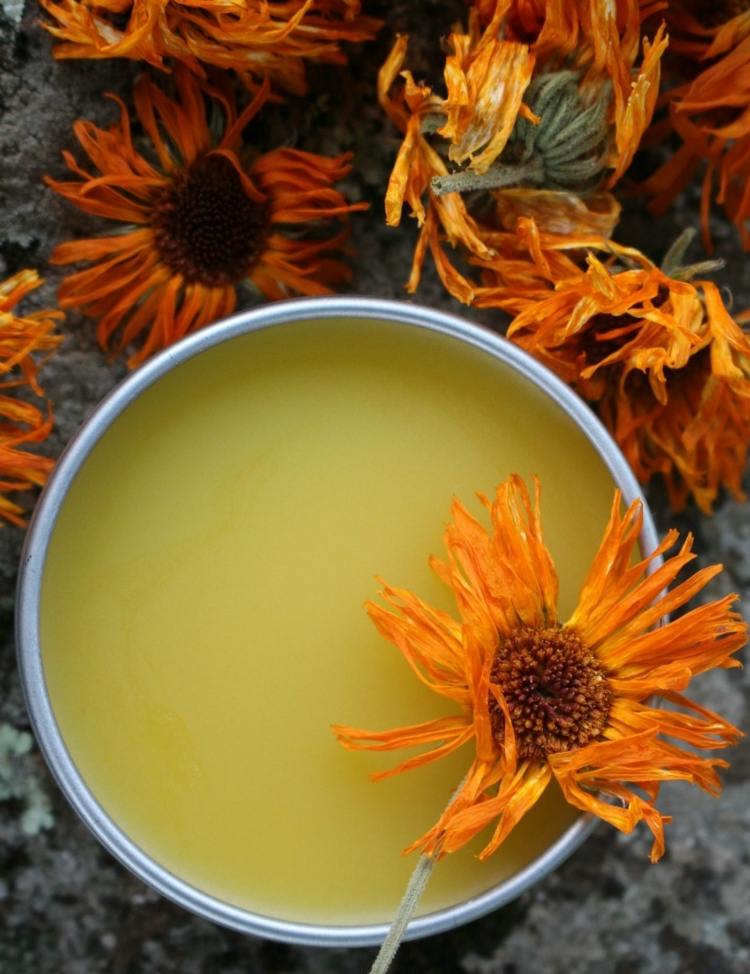
Sunburn, hemorrhoids, varicose veins, strains and bruises and even conjunctivitis are also treated with her. We will now explain how exactly based on some of the most common complaints:
Marigold ointment effect on the face

For wrinkles, pimples, acne and for the lips: Marigold cream is suitable for numerous skin problems and improves the complexion by inhibiting inflammation and at the same time promoting blood circulation. In this way, scars can even be avoided and treated.

Marigold ointment against pimples
Most products that are actually intended for the treatment of pimples and acne contain so-called comedogenic substances that additionally clog the pores because they are greasy. However, the calendula ointment contains so little substance that the risk is low. Especially if the marigold ointment is homemade, it is ideally suited in the fight against blemishes, including even blackheads.
It is recommended for acne, but it has not yet been proven whether it really helps. If you add more anti-inflammatory herbs to a homemade cream, you can even improve the effect. Tea tree oil is one option, for example. But since it could irritate the skin, you should first test the homemade marigold tea tree oil ointment on the forearm.

Marigold ointment lips
Especially in winter, you quickly suffer from dry and chapped lips, which are not only unsightly, but can also hurt because they are constantly in motion. Marigold ointments can make the lips supple again. The DIY lip balm should also be applied regularly. Make the ointment yourself, suitable as a carrier material such as milking fat or petroleum jelly.

Marigold ointment against wrinkles
A great news for everyone who persistently struggles against the increasing number of wrinkles is that the calendula ointment also has a smoothing effect. At the same time, it strengthens and relaxes the skin. You could already see success after the first application. The best way to fight wrinkles is to use the ointment at night. Apply a little of it to the affected skin and go to sleep so that the miracle ointment can work.
Attention: The ointment is greasy and often turns yellow. Protection for the pillow case is therefore recommended.
Wound healing with marigold cream and scar treatment
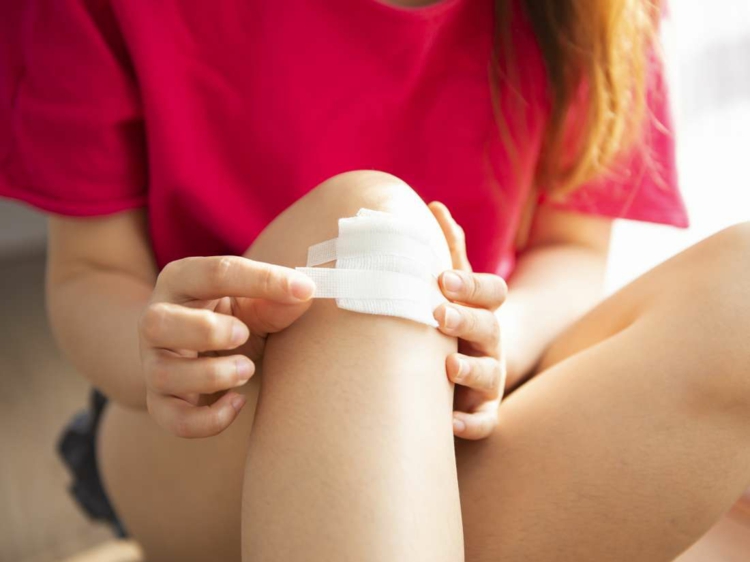
Especially with more stubborn wounds that don't want to heal, we like to use the Calendula ointment. Even simple cuts and burns are supported with their help in healing, thanks to their anti-inflammatory and circulation-promoting properties. The ointment is simply applied regularly to the wound.
However, fresh ones are an exception tattoos, even if they are also wounds. It is forming a film that is too thick. The result is that the tattoo may soften and the wound begins to wet, which has a negative effect on wound healing and ultimately also on the tattoo. It is therefore not advisable to use marigold ointment for the tattoo and the subsequent care.
It is not recommended to apply marigold ointment to open wounds, as this can lead to redness and a burning sensation in some cases. Allergy sufferers in particular should avoid treating open wounds with the cream or ointment.
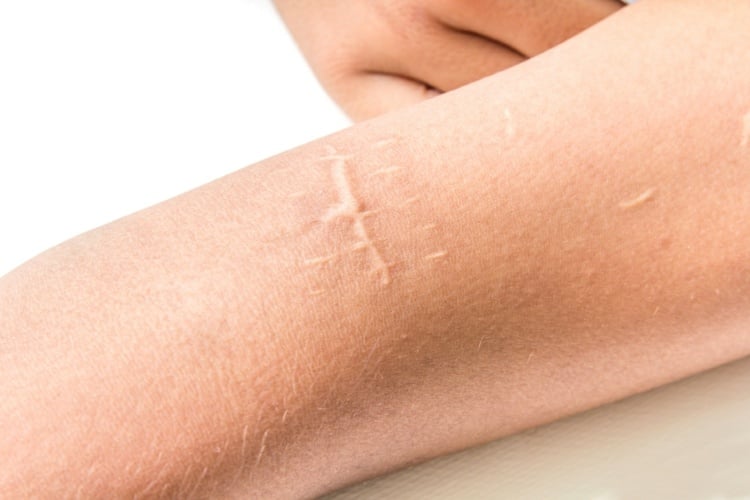
scar treatment
If you want to treat scars with the marigold ointment, you are also making a good decision because it keeps the scars supple. Scar growths are avoided. And if you treat wounds with such an ointment from the beginning (as soon as they are no longer open), you can even prevent scarring or at least reduce the extent.
Marigold ointment in neurodermatitis

In itself, the marigold in the form of ointments and creams is perfect for healing wounds caused by scratching. They prevent them from becoming inflamed, inhibit existing inflammation and thus promote wound healing. However, the problem is that many who suffer from eczema do not tolerate the marigold and are allergic to it. You should test this in advance. If this is the case for you, arnica can be used as an alternative, but the effect is not quite as high.
Alleviate hemorrhoids with calendula ointment

Hemorrhoids are not only painful, but are usually accompanied by itching. Here the calendula ointment can help, because it relieves the unpleasant itching. If you want to apply the marigold ointment to hemorrhoids, simply apply a little of it to the affected area. You can repeat this several times a day.
Marigold ointment in the genital area

Both men and women can take advantage of the ring flower when it comes to caring for the genital area. But what does marigold ointment contribute to intimate hygiene? For one, essences can soothe sensitive skin. After shaving, marigold ointment can help with inflammation or, if applied immediately after shaving, even prevent the development of such.
Because the marigold also has a fungicidal effect, it is also wonderfully suitable for curing intimate fungus. In this case, however, the ointment is not recommended, but a hip bath, which is enriched with the flowers. You can also get advice from your gynecologist.
Make your own calendula ointment

You can buy marigold ointment in the pharmacy, as well as in drugstores, but most products contain other ingredients that are not always beneficial. Therefore, it is better to either take a close look at the ingredients if you want to buy marigold ointment (the pharmacist can advise you), or rather use a suitable marigold ointment recipe with flowers to make the cream yourself. But how can you make marigold ointment yourself from dried flowers? Is it really that easy?
If you want to make marigold ointment yourself, you need so-called carrier material. For example, you can choose between coconut fat, petroleum jelly, milking fat and beeswax. We would like to introduce a few variants and recipes to you below.
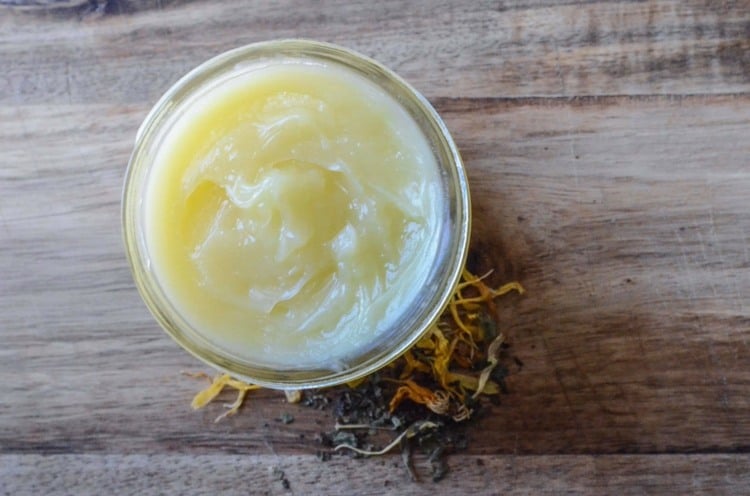
Marigold ointment itself make coconut fat
You can prepare marigold ointment with coconut oil or fat by using approximately the same amount of fat as dried or fresh and crushed flowers. Heat the fat on low heat and then add the flowers for 10 minutes. Stir occasionally and don't raise the heat so the flowers don't get fried. They should only be able to release their oils in warm coconut oil.
Then set the pot aside for 24 hours to rest. Then heat the fat again and strain it through a wool or linen cloth into a suitable container and squeeze out the flowers. This ointment is stable for 12 months as long as you store it cold and dark.
Alternatively, you can also use 200 g coconut oil and 2 handfuls of fresh or dried flowers. The method of manufacture is then the same.

Marigold ointment make Vaseline yourself
Vaseline is also suitable for the preparation of a calendula ointment. However, since it is not a natural product and is made from petroleum, it is less popular than the other variants. But it is also cheaper. If you want to collect fresh flowers, make sure that they have not been treated with pesticides.
- 2 packets of Vaseline
- 2 handfuls of marigold flowers
Proceed in the same way for the production as in the instructions above with coconut fat.
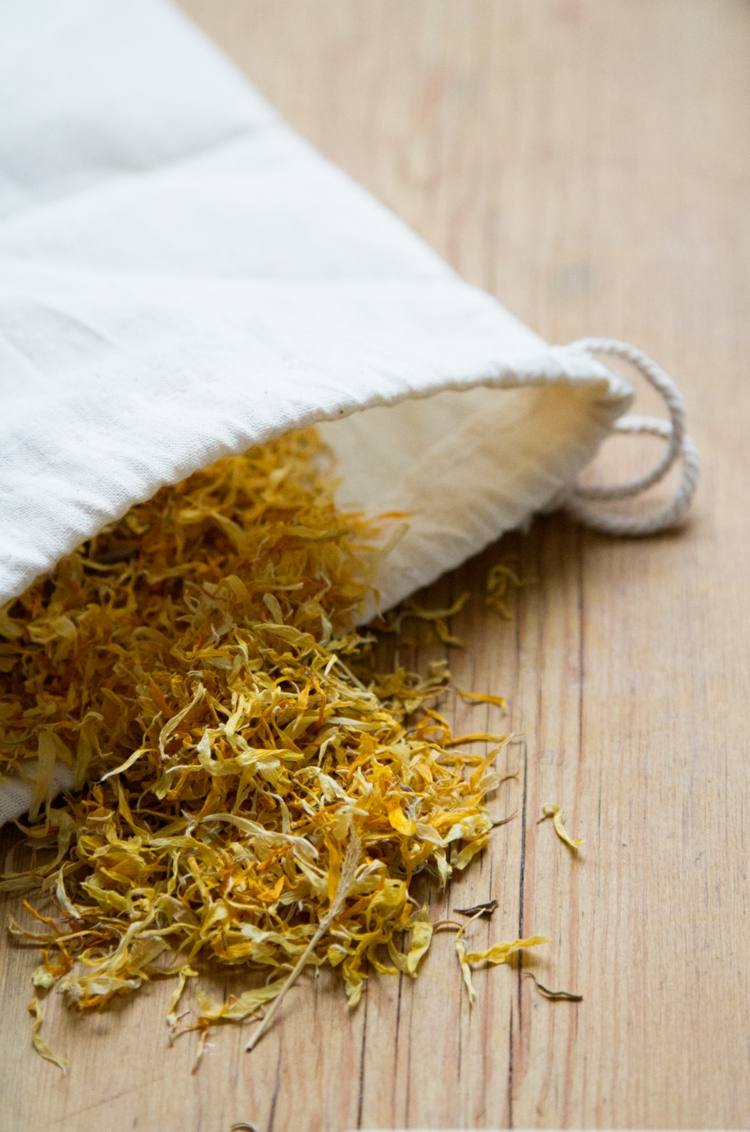
Make marigold ointment yourself with milking fat
Milking fat is known to make the skin supple. Alternatively, lard can also be used. You can make the marigold ointment yourself with these instructions:
- 500 g milking fat
- 2 double-handed marigold flowers
First heat the milking fat in a tall saucepan, then add the flowers and reheat everything until the milking fat foams. Then let the whole thing steep for 24 hours, reheat the ointment and strain it through a linen towel to remove the flowers.

Make marigold ointment with beeswax yourself
Even with natural beeswax, an ointment can be made. However, this is for pollen allergy sufferers Not suitable. Here is the recipe for marigold ointment with beeswax:
- 25 g beeswax
- 250 ml of olive oil
- 2 cups of marigold flowers
Put the olive oil and the flowers in a saucepan and heat the two ingredients, but without the oil starting to boil. So choose a low heat and heat the flowers for about 15 minutes. Strain the mixture through a linen or woolen cloth and then heat the oil again, but this time with the beeswax. Pour the finished ointment into boiled jars, which you only close when it has cooled completely, so that the steam does not collect water in the jars.
Marigold cream in pregnancy, lactation and in the baby

If you want to use marigold ointment during pregnancy, you don't need to worry about that. The natural active ingredients are not dangerous and will really do your skin good. The ointment keeps the taut skin of the abdomen soft and supple and relieves the itching that can be caused by stretch marks. Although the ointment cannot prevent the strips, it can at least reduce them.
Is the marigold ointment suitable for babies? However, as long as there is no allergy to daisies! Babies who tend to have dry skin can be rubbed with it without any problems. In this way you care for the skin preventively and gently. It is also suitable for a sore bottom. Here, for example, the ointment from Weleda, which is specially designed for the sore bottom, is well suited.
Side effects of the calendula ointment

It is good to know that the marigold cream has no side effects unless there are allergies to daisies. Therefore, it can be used without hesitation for the mentioned and other complaints and health problems.
The post marigold ointment as a home remedy – what the cream is used for & do-it-yourself recipes appeared first on Deavita.com | Living ideas, design, hairstyles, make-up, lifestyle, health and beauty tips.





















